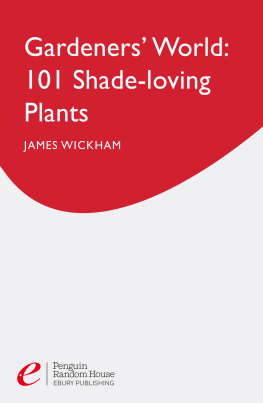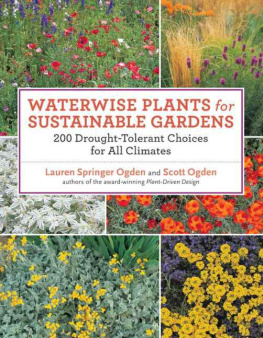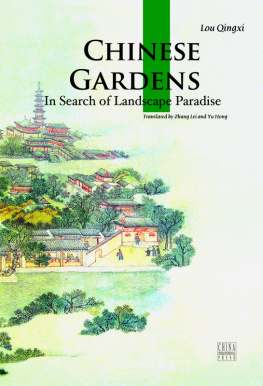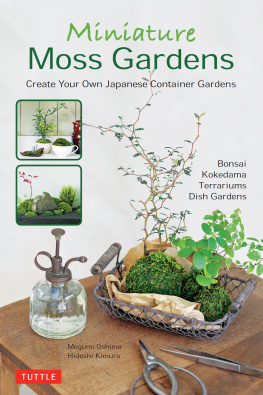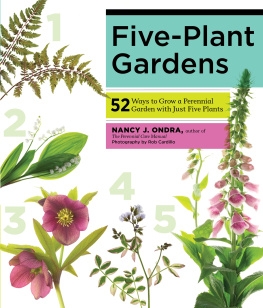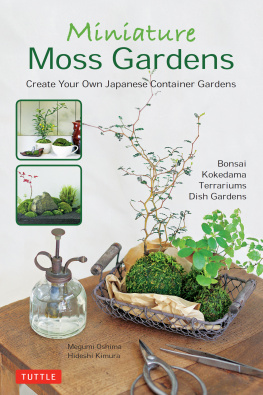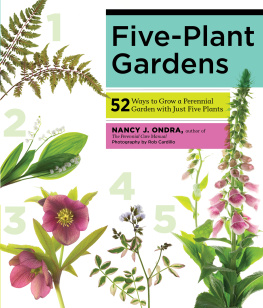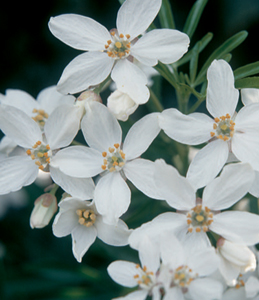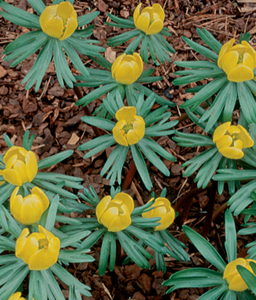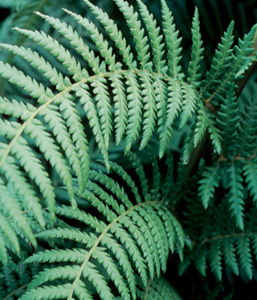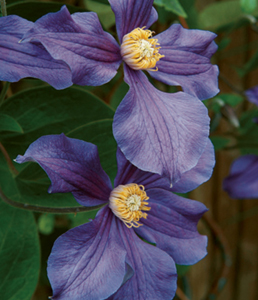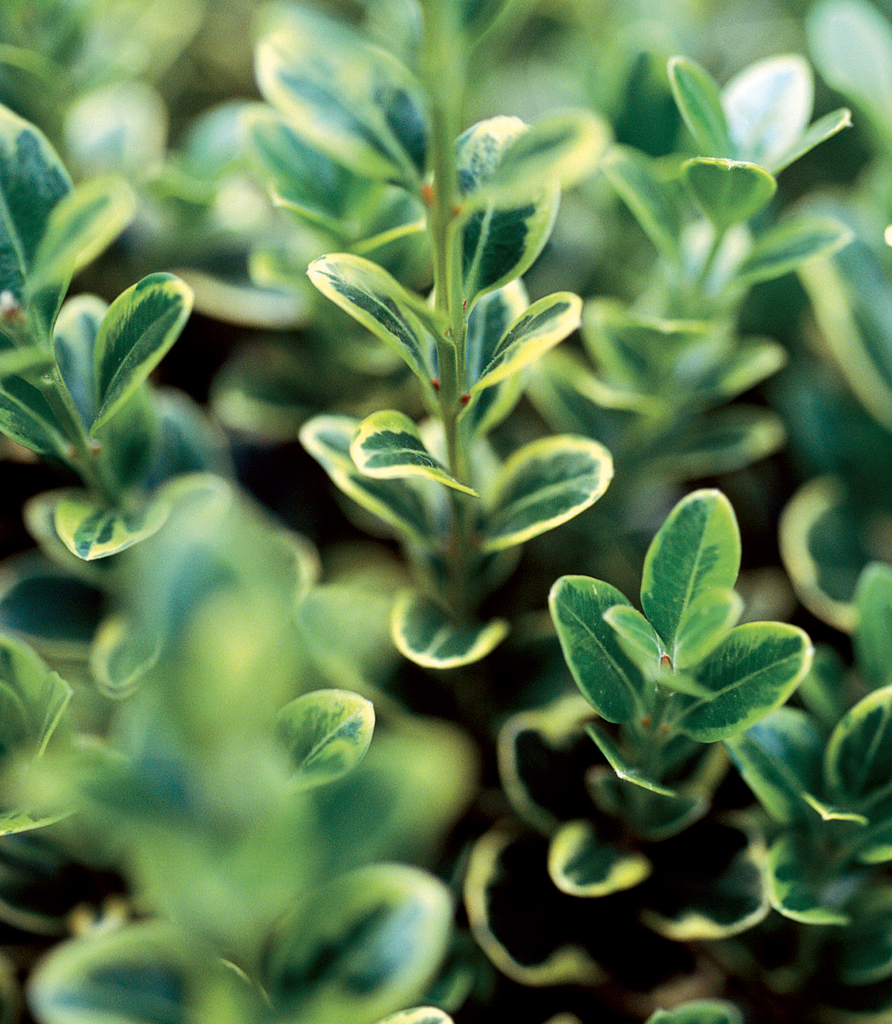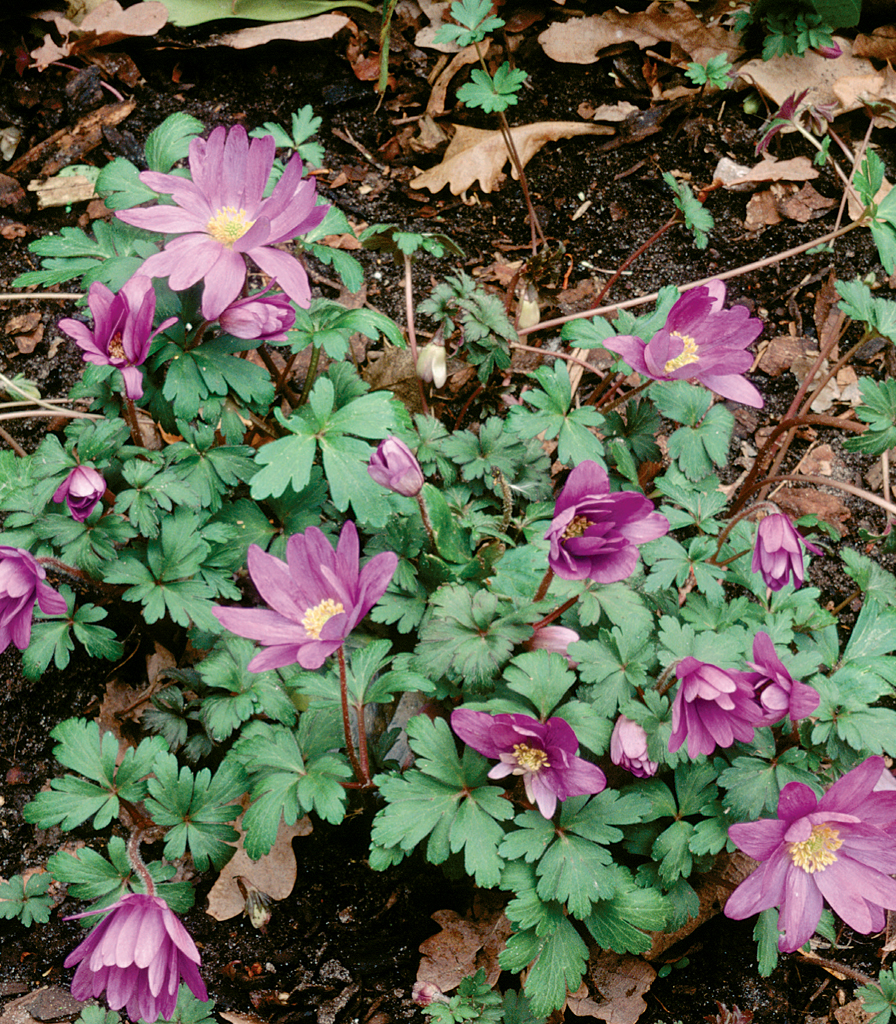Contents
Introduction
Having shade in the garden is often seen as a tricky issue, but if youve got it, think yourself lucky. This is, in fact, a huge opportunity because many of our most exciting plants actually prefer to be in subdued light. In fact, every garden has areas of lower light levels from a shady wall or a spot overshadowed by trees or hedges to a fully north-facing garden in the lee of neighbouring buildings. But fear not, all these can be brightened with the right plants; read on and well show you how to do this.
In this book youll find 101 favourite plants that will all thrive in shade. Theres a chapter on ground-covering plants, another that highlights plants when theyre overshadowed by walls, and one covering each season to prove that you really can have a shady garden that looks good all year round.
Among the plants that we at Gardeners World Magazine have chosen for this book are fail-safe favourites, such as ferns and hostas, as well as many new and unusual plants to provide extra inspiration. You could call them all shady characters but in the best possible way!
James Wickham, Gardeners World Magazine
Shade plants tips
Choosing plants that are naturally shade-tolerant is the first step to success if you have a shady garden, but you can employ other tactics, which will really make a difference to the final result.
Shade is often caused by overhead trees or nearby hedges, which make the surrounding ground very impoverished, so its essential to improve the soil before planting. The most effective soil improvers are garden compost or well-rotted farmyard manure, added generously to the soil when planting.
To help conserve moisture in a dry shady area, use a mulch of garden compost spread at least 5cm (2in) deep over the soil every year. You could also use a pale coloured gravel to do the same job and this has the added advantage of making a shady area seem instantly brighter.
Dont be afraid of raising up a trees crown by taking off some lower branches and pruning off the bottom branches of established shrubs. This will let in loads more light, make the garden seem more spacious and often improve the shape of the plant as well.
Take advantage of the seasonality of shade cast by trees that lose their leaves in autumn. A huge range of winter and spring-flowering bulbs and perennials such as snowdrops, crocuses and hardy cyclamen will flower and grow happily while light can stream in through the bare canopy.
If choosing trees for a small garden plump for those with small leaves and light canopies, such as birches and rowans, as light will filter down through them allowing a greater range of plants to grow underneath. Upright or columnar-shaped trees such as the flagpole cherry, Prunus Amanogawa also provide height without having a large spreading crown.
In a small shady town garden, paint walls or fences a pale colour to reflect any available light, or choose climbers with yellow or variegated leaves, such as Hedera helix Buttercup to provide a bright background.
Hardy plants that have been grown in pots can be planted throughout the year, but they are much easier to establish if planted in the autumn or spring, while the ground is moist and warm. This is especially important if planting a dry shady garden.
A sprinkling of general-purpose fertiliser around the plants once a year will encourage quick establishment and healthy growth, especially in poorer soils.
Lawns can become very bare and mossy in a small shady garden, so its often better to re-design the space, replacing the lawn with materials such as gravel or paving, softened with plants in beds and containers.
Spring
Anemone
Anemone blanda
A late-winter wake-up with bulbs
Time to plant: autumn
Bulb H: 1020cm (48in), S: 1530cm (612in)
This early spring-flowering anemone is easily grown and thrives in bare ground or sparse grass under trees, quickly naturalising into a wonderful patch of colour. Varieties with blue, pink and pristine white flowers are available and look gorgeous if planted together to form a little tapestry. Anemones also look lovely weaving among the sunny blooms of the winter aconite and the little propeller-shaped blooms of the hardy Cyclamen coum.
The hard, knobbly bulbs of Anemone blanda, correctly called tubers, should be planted shallowly in the soil in autumn, and be arranged in random groups for a natural effect.
TIP
If naturalising these bulbs in sparse grass, allow the anemone foliage to die back before mowing.
Camellia
Camellia x williamsii Contribution
Classic camellia
Time to plant: all year round
Shrub H: 90cm (3ft), S: 90cm (3ft)
The aristocrats of the early spring garden, camellias bring style and glamour at a time of year when its most unexpected and welcome. The waxy blooms almost look too tender to be outside, but this is a tough evergreen that shrugs off winter cold and thrives in quite deep shade.
All camellias prefer acid soil, but dont let that put you off if you have more limy conditions at home, as they grow perfectly well in containers filled with ericaceous compost. If you can, place your pot away from the morning sun as a rapid thaw after a frosty night can damage the flowers.
To keep leaves a lustrous dark green, remember to feed pot-grown camellias during summer with a fertiliser for ericaceous plants. Keep pot-grown camellias damp at all times in summer, as drying out even for a short time may cause them to drop their plump, unopened flower buds the following spring.
TIP
Camellias dont need regular pruning, but if your plant becomes too large it will respond well to pruning and will sprout again, even from an old stump
Next page
